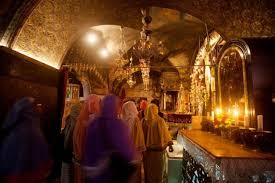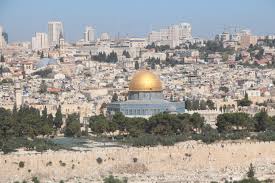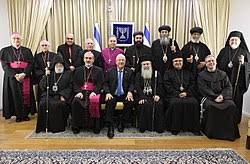Culture
Christmas 2019 – Christians in Israel
By Itzhak Rabihiya
· On the eve of Christmas 2019, approximately 177,000 Christians live in
· In 2018, the Christian population grew by 1.5%, compared to 2.2% in the previous year.
· 77.5% of the Christians in
· Most of the Christian Arabs reside in the northern part of
· 41.3% of the non-Arab Christians reside in the Tel Aviv and Central Districts, as compared to 33.6% in the Northern and Haifa Districts.
· The localities with the largest Arab Christian populations are
· 855 Christian couples married in
· In 2018, 2,721 infants were born to Christian women, about 76% of whom were born to Arab Christian women (2,067 infants).
· The average number of children up to age 17 in Christian families with children up to this age is 1.87. Of those, the average number of children up to age 17 in Arab Christian families is 1.96 – smaller than the numbers in Jewish families (2.37) and Moslem families (2.77).
· Women constituted 74.4% of Christian students studying toward a second degree, compared to women constituting 63.1% of all students studying toward a second degree. For third degrees, the percentages were 62.8% and 53.2%, respectively
· Among all students studying toward a first degree, Christians were most highly represented in the following fields: information systems administration (15.3%), musicology (13.7%), and transportation engineering (10.9%).[1]
· Compared to Arab Moslem students, the percentage of Arab Christian students studying education and teacher preparation was lower, and the percentage studying engineering, architecture, law, and medicine was higher.

The largest percentage of pupils entitled to a matriculation certificate who met university entrance requirements was among Christian Arabs (70.9%). This was similar to the percentage of pupils in Hebrew education (70.6%), and higher than among Druze (63.7%) and Moslems (45.2%).
The history of the Christian communities in the Land of Israel begins with the life and ministry of Jesus of Nazareth. After his death, the early

By the time of the Muslim conquest, in the 7th century, the church in the East was already subdivided into various groups, although they seem to have continued to share in the use of the holy places. It was only with the

Of the 8.2 million people living in
The Christian communities may be divided into four basic categories: Chalcedonian-Orthodox, Non-Chalcedonian Orthodox (sometimes called Monophysite), Roman Catholic (Latin and Uniate) and Protestant. These communities consist of some 20 ancient and indigenous churches, and another 30, primarily Protestant, denominational groups. Except for national churches, such as the Armenian, the indigenous communities are predominantly Arabic-speaking; most of them, very likely, descendants of the early Christian communities of the Byzantine period.

· In 2018, the Christian population grew by 1.5%, compared to 2.2% in the previous year.
· 77.5% of the Christians in
· Most of the Christian Arabs reside in the northern part of
· 41.3% of the non-Arab Christians reside in the Tel Aviv and Central Districts, as compared to 33.6% in the Northern and Haifa Districts.
· The localities with the largest Arab Christian populations are
· 855 Christian couples married in
· In 2018, 2,721 infants were born to Christian women, about 76% of whom were born to Arab Christian women (2,067 infants).
· The average number of children up to age 17 in Christian families with children up to this age is 1.87. Of those, the average number of children up to age 17 in Arab Christian families is 1.96 – smaller than the numbers in Jewish families (2.37) and Moslem families (2.77).
· Women constituted 74.4% of Christian students studying toward a second degree, compared to women constituting 63.1% of all students studying toward a second degree. For third degrees, the percentages were 62.8% and 53.2%, respectively
· Among all students studying toward a first degree, Christians were most highly represented in the following fields: information systems administration (15.3%), musicology (13.7%), and transportation engineering (10.9%).[1]
· Compared to Arab Moslem students, the percentage of Arab Christian students studying education and teacher preparation was lower, and the percentage studying engineering, architecture, law, and medicine was higher.

The largest percentage of pupils entitled to a matriculation certificate who met university entrance requirements was among Christian Arabs (70.9%). This was similar to the percentage of pupils in Hebrew education (70.6%), and higher than among Druze (63.7%) and Moslems (45.2%).
The history of the Christian communities in the Land of Israel begins with the life and ministry of Jesus of Nazareth. After his death, the early

By the time of the Muslim conquest, in the 7th century, the church in the East was already subdivided into various groups, although they seem to have continued to share in the use of the holy places. It was only with the

Of the 8.2 million people living in
The Christian communities may be divided into four basic categories: Chalcedonian-Orthodox, Non-Chalcedonian Orthodox (sometimes called Monophysite), Roman Catholic (Latin and Uniate) and Protestant. These communities consist of some 20 ancient and indigenous churches, and another 30, primarily Protestant, denominational groups. Except for national churches, such as the Armenian, the indigenous communities are predominantly Arabic-speaking; most of them, very likely, descendants of the early Christian communities of the Byzantine period.

Stories for you more +